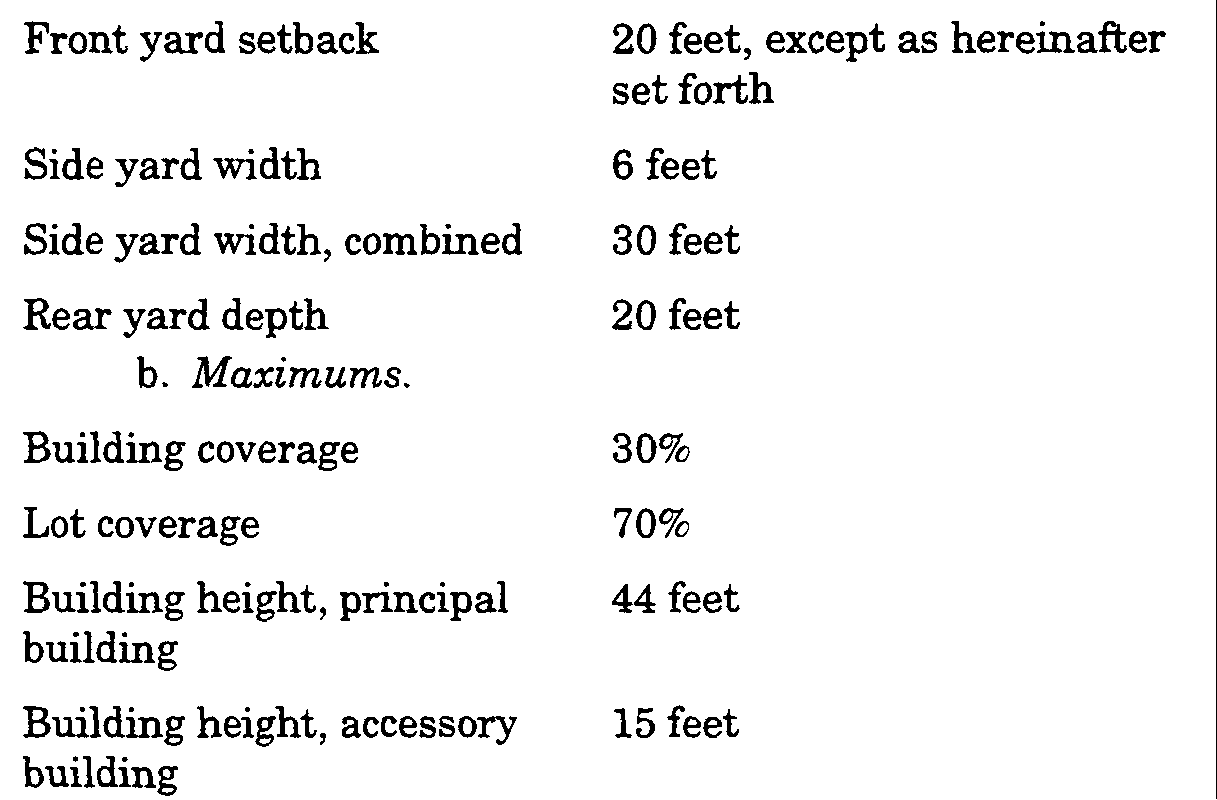(5) Other provisions and requirements.
a. Signs. See Section 33-18(c) of this chapter.
b. Off-street parking; loading and unloading. See Section 33-28 of this chapter.
c. The minimum front yard setback for a building up to 35 feet in height shall be 2/3 of the height of the building, to the nearest foot. For a building greater than 35 feet in height, the minimum front yard setback shall be 23 feet plus one foot for each foot or fraction thereof of building height in excess of 35 feet. In no case, however, shall the front building line be closer to the street line than the average of existing front yard setbacks along the same side of the street to the nearest intersections.
d. The minimum rear yard depth shall also correlate to the height of the building, in the same proportions as set forth above for front yard setback.
e. If the subject property abuts a residential district, a buffer and screening shall be required, in accordance with Section 33-15(s).
f. A minimum of 20% of the lot area shall be landscaped.
(e) L-I Light Industry District.
(1) Permitted principal uses.
a. General business offices.
b. Research, experimental or testing laboratories.
c. Light, non-nuisance manufacturing, processing, fabrication, assemblage, packaging and warehousing of products.
d. Trade schools.
(2) Permitted accessory uses. Uses customarily incidental to the permitted principal uses, including satellite antennas, subject to the following conditions:
a. Satellite antennas shall be used for receiving signals only; transmission is prohibited. Reception may be for the benefit of off-site users.
b. There shall be no more than two satellite antennas per lot.
Installation may be either on the roof or on the ground. In both cases, the installation shall be adequately screened to minimize visibility from adjacent properties. If ground mounted, the apparatus shall not be located in any front yard or side yard and shall not exceed the height of the principal building located on the lot. The permit application shall be accompanied by a screening plan and, for roof-mounted antennas, written certification from a structural professional engineer that the installation will be resistant to a one hundred-mile-per-hour wind.
d. The height of the apparatus (including antenna supports) shall not exceed 20 feet. The surface area of the reflective dish shall not exceed 200 square feet, and the diameter of the reflective dish shall not exceed 16 feet.
(3) Conditional uses.
a. Motor vehicle service stations and public garages, subject to the provisions of Section 33-25 of this chapter.
b. Public utility installations, subject to the provisions of Section 33-25 of this chapter.
c. Wireless communications towers and antennas, subject to the provisions of Section 33-25 of this chapter.
(4) Dimensional, density and other bulk restrictions.
a. Minimums.

